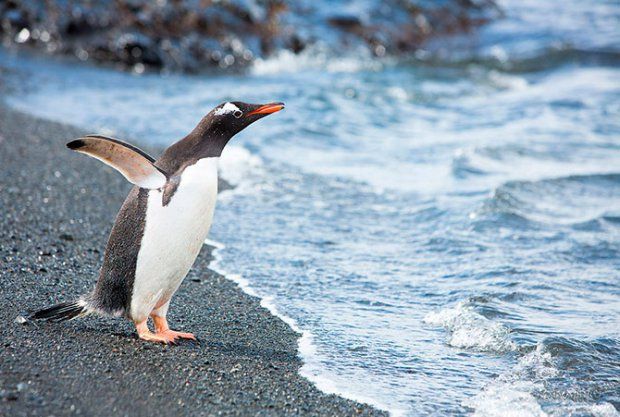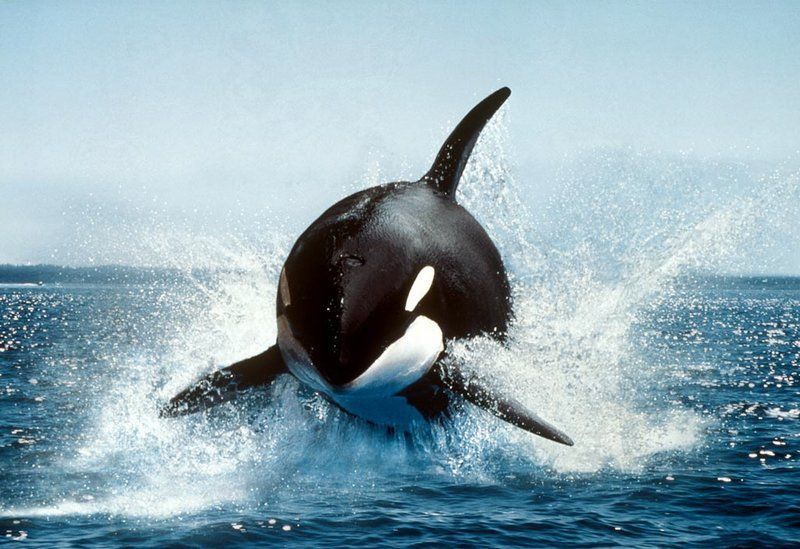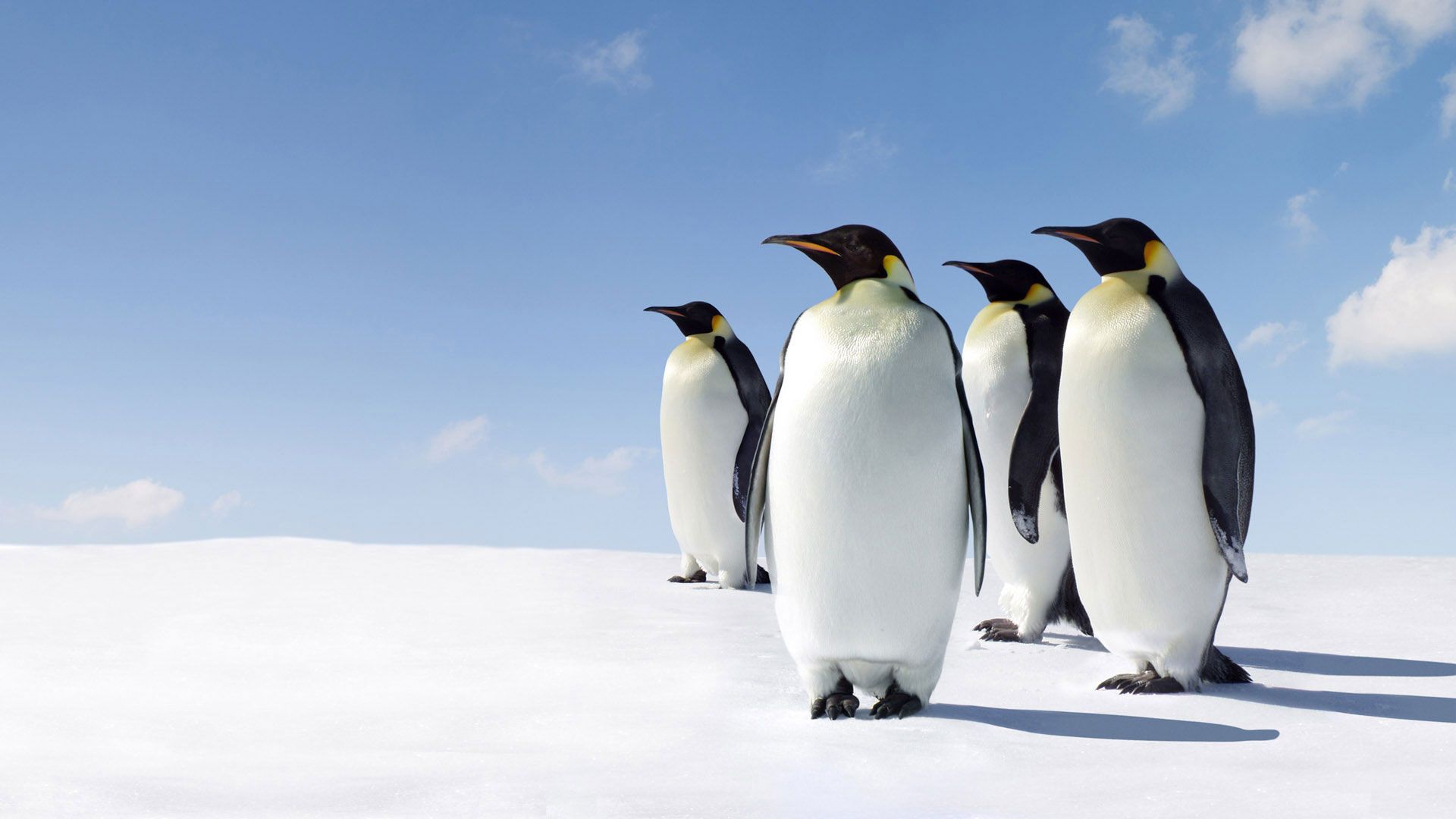Habitat and lifestyle of the otter
Once upon a time, people and animals were equal before the formidable forces of nature. But millennia passed, and man was able to subjugate wild nature and master most of the earth.
Nowadays animals often cannot live on our planet in natural conditions, and many species are becoming extinct. Over the past 100 years, several hundred animal species have ceased to exist on Earth. Many are at risk of death in the near future. Adults and children all over the world must help animals not disappear from the face of the Earth. And for this we need to know who lives around us - in forests, fields, mountains, rivers. You need to know the habits of animals and not interfere with their natural lifestyle.
Otters are the largest members of the mustelid family: they reach a length of almost a meter and their weight reaches almost 12 kilograms. Otters are found in inland waters and are excellently adapted for living on water. Thanks to its rounded head, short thick neck, cylindrical body, thick tail and webbed feet, the otter moves effortlessly in the water. When she dives, the muscles of her ears and nostrils contract and close them tightly.
The otter's body is elongated, flexible, mobile, its ears are round, small, barely protruding from the fur. The eyes are large, oriented forward and upward, and glow copper-red at night. The legs are short, with small claws and developed membranes between the toes. The hair is dark brown, very thick and even throughout the body. The color of the fur on the belly is slightly lighter than on the back. Females are smaller than males.
Habitat
The otter is a semi-aquatic animal. Prefers inaccessible wooded shores. The nature of the ice cover is of great importance for the existence of the otter. The presence of wormwood and thawed areas is necessary for animals. The abundance of ice and complete freezing of water bodies deprives them of the opportunity to develop even water bodies rich in food or forces them to make dangerous seasonal transitions.
Water is vital for the otter: it gets food in it and seeks salvation from danger. But land is also of great importance in the life of an otter; on it the animal builds shelters and reproduces, rests and makes transitions between bodies of water.
The river otter, as I have already written, prefers rivers whose banks are covered with forest over a large area. Here she lives in underground passages. The exit is always under water, usually at a depth of half a meter; from here a passage almost two meters long rises in an oblique direction and leads to a spacious basin, which is carefully lined with grass, so that it is always dry. Another narrow passage leads from the basin to the surface of the shore and serves for ventilation. Typically, the river otter uses ready-made burrows and caves in the shore, washed away by water, for housing, which it only lengthens and expands by digging the ground and gnawing the roots it comes across. In rare cases, she uses abandoned fox and badger holes if they are located near water. For the most part, she owns several dwellings; if it happens that a river or lake is too abundant in fish, then there is no need for it to undertake long trips to change its habitat. During a flood, which floods her home, she takes refuge in nearby trees or in a hollow and spends time here in peace and relaxation from her constant occupation - fishing.
The otter prefers reservoirs with clear water, fast currents and rocky beds. Because of her passion for rivers, people call her the list (previously they said poreshnya). The habitat of the river otter, individual or family, is small and limited to the shoreline, the width of which rarely exceeds 200-300 meters.
In difficult times, the otter turns into an avid traveler. In the north of the region, the otter moves away due to unfavorable ice cover - the animal actually leads a semi-nomadic lifestyle in winter, moving from one body of water to another. In the summer, migrations, on the contrary, are caused by summer shallowing and drying out - the otter goes to where large waters remain.
Food
The river otter is a typical fish eater. In the rivers of the Chelyabinsk region, it prefers perch, roach, bream and pike. The otter prefers small fish to large ones, and willingly catches fry in spawning areas. The otter feeds on everything it can handle. Once, not far from the house, in a short time, an otter caught two geese that were swimming in a ditch, sneaking up to them under water and grabbing the prey by the belly.
The otter's winter food is mainly frogs, which it hardly touches during the ice-free period. According to scientists, in winter these amphibians make up about half of its diet, but in the spring, when frogs are more active, the otter prefers to hunt fish.
Despite the fact that the otter is a carnivorous mammal, its diet in summer includes coastal plants such as reeds, cattails, horsetail, sedge and reeds.
Hunting methods
Usually the river otter goes fishing only after sunset. During such a hunt, she often happens to approach human habitation and climb into cities and villages lying along large rivers. In shallow waters, she drives fish into bays to make it difficult for them to escape and make it easier to catch them, or, by slapping the water with her tail, she drives them out of coastal holes and from under stones, so that the fish certainly becomes prey for a cunning beast.
The main way an otter hunts for fish is by stalking and stalking. On shallow rifts, the predator guards its prey on rocks or on the shore. An otter watches for a water rat at its burrows. It mainly pursues schooling and not very active fish, which are easier to catch. The otter often visits “fish holes” - pools of calm water, in which sedentary fish accumulate for the night. Underwater, she always grabs prey with her mouth. An otter normally eats about one kilogram of fish per day. Having grabbed a fish, the predator usually eats it on a stone protruding from the water, in winter on the edge of an opening. It eats only freshly caught prey, does not hide uneaten remains and never returns to them.
Features of reproduction
There is still a lot of uncertainty in the biology of otter reproduction. It is not confined to a specific season of the year. In every month of the year you can find her cubs. Typically, mating time coincides with the end of February and the beginning of March. The male and female attract each other with a strong, drawn-out whistle and play lovingly with each other in the water. Intrauterine development is delayed and can occur after 7-8 months. But most often, nine weeks after mating, the female brings two to four blind cubs in a safe burrow, built on the shore under an old tree or strong roots on a soft and warm grass bed. After nine to ten days the animals open their eyes, and after eight weeks the mother takes them out to fish. They remain for almost six months under the supervision of the female, during which she teaches the techniques necessary for their hunting. In the third year they become so mature that they are capable of reproduction. In the first days, the mother, leaving to hunt, covers the otter eggs with grass or moss if the nest is not made in a hole, but from the surface of the ground, hiding them from a predatory animal or bird of prey.
The otter is very attached to its offspring. In case of danger, she protects them, sometimes even attacks first. It's interesting how otters teach their cubs to swim. Kids are not afraid of water and splash around the shore, not daring to go into the depths. Their parents push them, and sometimes even take them on their backs to the middle of the river, and dump them there. Otters splash around in the water, and adults make sure they don't drown. The animals reach sexual maturity in the third year of life.
Lifestyle and distribution
- biological features
- traces
- distribution
- economic significance
- breeding and taming the otter
The otter belongs to specialized freshwater forms associated with lowland and mountain rivers. In the absence of persecution, it gets along well in anthropogenic landscapes. It makes its burrow in close proximity to a pond, often using a niche under the roots of fallen trees (Appendix 1). It obtains food in the water and seeks refuge here in case of danger. It dives instantly with a strong splash, but if necessary, it goes under water completely silently.
Before diving, the otter takes in air in a split second; to do this, it only needs to stick the tip of its muzzle out of the water. It can stay underwater for up to 5 minutes; the otter’s diving path can be traced by the bubbles of the air it exhales.
The otter is a very active animal that spends a significant part of its time playing. In the water, the otter moves quickly, catching even the fastest fish (Appendix 5). She loves to skate with a running start on smooth ice or steep slopes, where characteristic grooves remain on the clay or snow (Appendix 3). The otter has a special “roller coaster” that the animals have been using for games for decades. In reservoirs where otters live, you can also find areas on the shore with trampled grass, where otters rest during the day (Appendix 6), as well as viewing and feeding “tables” with food remains and droppings. The otter is cautious and secretive; It mainly makes transitions to new areas by water. On land, the otter is less mobile and even clumsy, although it can walk up to 10 km on snow-covered ice during the night. The otter knows its hunting area - a strip approximately 100 meters wide, stretching along the river for 2 - 6 km, down to the smallest detail. She has several burrows in this area. In some the otter sleeps and rests, while in others it lives only while feeding its babies. These nests are made especially carefully: the entrance is hidden under water, the ventilation hole is cleverly disguised in the bushes. With a rich food supply, a settled animal can live for several years.
Tracks have a characteristic shape, with teardrop-shaped toe marks and an elongated heel on the hind legs. The first toe is often not imprinted, especially on the front paws, but even in not very deep snow there is usually a furrow from the tail. The size of the footprint is 12x10 cm. The footprints are arranged in oblique rows of 3 or 4 (Appendix 3) Jump length 60 - 90 cm.
The otter is distributed everywhere except the tundra and arid areas, but is rare almost everywhere or has disappeared due to hunting, water pollution and a decrease in fish stocks. Relatively common only in some places in the north and north-west of the European part of Russia, on the middle Ob, Kamchatka, Sakhalin, in the Amur basin and nature reserves of Primorye. In the Urals it is found from the tundra of the Yamal Peninsula to the Southern Urals inclusive, along the valley of the Ural River to the mouth. Currently, the otter permanently lives in the northwestern part of the Chelyabinsk region: the basin of the Verkhnyaya and Nizhnyaya Bianka (Asha region), Ay, Sulla, Nyazya and Ufa rivers.
Among fishermen and hunters at one time there was a widespread opinion that the otter was harmful. But careful research has shown that in places where the otter settles, fish catches increase. It “removes” sick and weakened fish from the reservoir and destroys trash fish en masse, thereby protecting the eggs of commercial fish from being eaten.
In the past, the otter was an important game animal. Her fur was in high demand because it is very beautiful and durable. Its wearability in the fur industry is taken as 100%. During the processing process, the coarse awn is plucked out and a short, thick, delicate underfur is left.
Although in nature the otter avoids humans, in captivity it easily makes contact with people. In terms of tameability, the otter is close to the dog. If an otter is raised from childhood, it will perceive people and other domestic animals as its family, love them and follow the person. A tamed otter cannot be passed on to other owners or sent to a zoo - it will suffer immensely after losing its family. The otter began to be domesticated many centuries ago. There is information that back in the 17th century, tame otters were used in England to drive fish into nets. On American and Canadian farms, it happens that otters live on equal terms with cats and dogs. Sometimes there are "semi-tamed" otters who live on the river and come to the farm to eat and play - after all, otters are more prone to play than any other wild animal. They really play with each other, and not only babies, but also adult otters. The list of fun activities includes catch-up, hide-and-seek, and wrestling. It happens that one otter catches a fish and hides it, while the others try to find it. Then the fish hides and the game starts all over again. In Russia, they tried to breed otters: in the Gorno-Altai Autonomous Region, on the basis of the Cherginsky experimental farm of the Siberian Branch of the Academy of Sciences of the USSR, in the early 80s, attempts were made to cage breeding otters. For a number of reasons, it was not possible to obtain positive results, and the work was curtailed. Currently, employees of the Novosibirsk Zoo are quite successfully breeding otters. You can try to domesticate the otter - after all, it knows how to communicate well with people.
I think that the common otter is a promising species for domestication and cage farming. Domestication and cage breeding can save this species from extinction in its natural habitat.





No comments here yet.